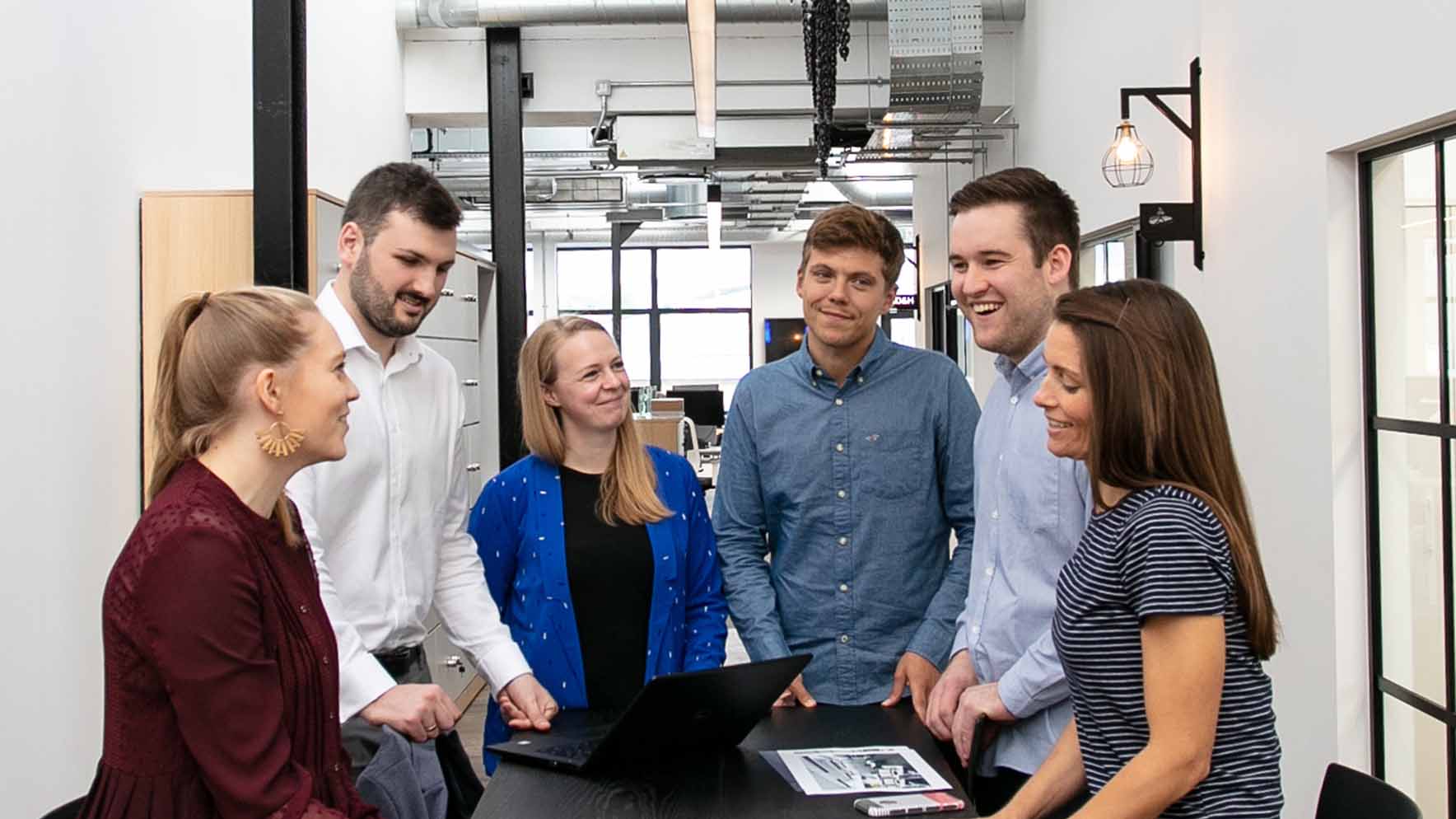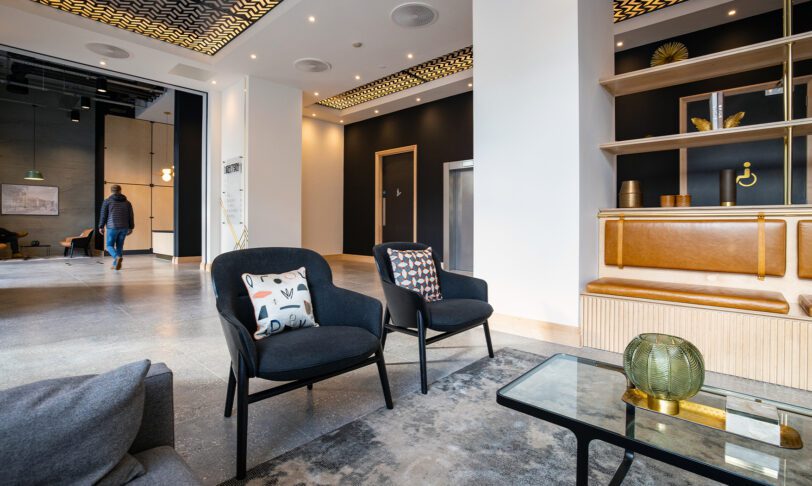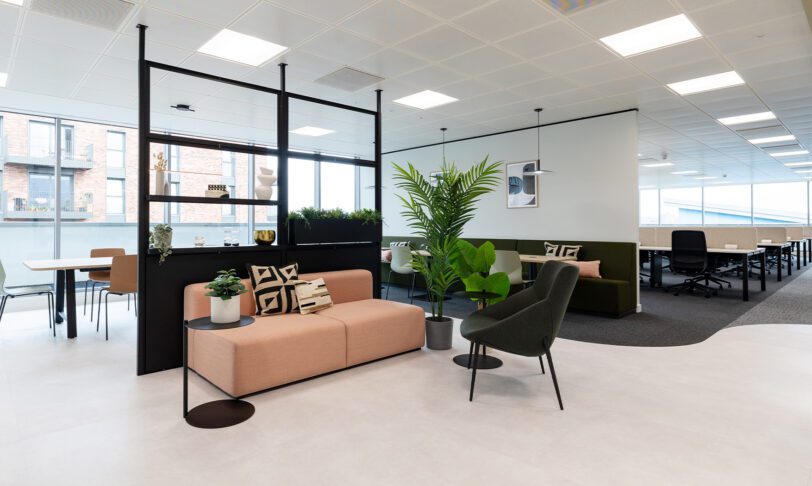The top 5 things we miss about the office
There’s no doubt that working from home has its upsides. Endless toast, the freedom to wear pyjama bottoms and additional time to spend with family or on hobbies have all positively impacted many people’s day to day lives (if not their waistlines).
However, as we return to the workplace, we thought we’d take a moment to recap some of the things we’ve missed about working in the office while we’ve been working from home.
1. Boundaries
Does it sometimes feel like you’re at your laptop 24/7? You’re not alone.
When working from home it’s easy to slip into a limbo state where you’re permanently half-at-work. Checking emails in your dressing gown before breakfast turns into eating dinner with an open laptop by your side, which segues into looking over a few documents while Netflix autoplays The American Office in the background. Then suddenly it’s bedtime. We can’t switch off properly as our brains are always in this half-conscious work mode.
This liminal state is compounded by the fact that those without a home office setup may do all types of work in a single place, Deep admin? You’re at the kitchen table. Mid-morning crumpet and cup of tea? Kitchen table. Sales call? Kitchen table. Creative workshop? Kitchen table.
And that’s assuming you have a decent kitchen table setup – not what the BBC has termed a “soft desk” (a nice term for working propped up in bed), something sure to lead to both postural problems and accidental napping.
Well-designed workplaces build in all types of subtle and obvious boundaries to facilitate multiple ways of working – and the different mind states that go with each. In many offices the end of a working day is clearly delineated by people packing up and saying goodbye – and occasionally deciding to mark the boundary between work and leisure time with a swift drink.
2. Variety
It’s not just the variety of working zones that matters. Working from home can feel like wading through porridge sometimes – every day can feel the same. The outside world is viewed through a laptop screen. Depending on your circumstance you see the same housemates, family or mirror day-in-day out, pacing the same route from the laptop to the toilet to the kettle to the fridge. In an office you spend time with a diverse group of people every day, which brings benefits such as being able to quietly judge what people are having for lunch, hearing about new shows to binge and laughing uncontrollably when someone accidentally tips a bowl of cereal in their lap.
There are other benefits though; in an office you’re more likely to hear about interesting stuff you might want to get involved with, whether that’s social, developmental or just interesting new projects you’d like to be part of. It’s much easier to add variety to your working day when you’re constantly exposed to new ideas and within earshot of the action.

3. Community
In our office there’s that sense that we’re all working together towards a common goal. We can motivate each other. We are collaborative and we work collectively, bouncing ideas off each other, having impromptu catch ups. We like being together in one place – we can easily see if someone’s there; they’re not just an orange, green or red circle next to their name on the screen. And then there’s the serendipitous exchanges. A Teams chat message or a video call is quick and easy but it’s not the same as bumping into someone in the kitchen and asking them how their weekend was ‘and by the way, did you hear back from that client about that project?’, or shouting over to the finance team that you have no idea what’s happening with your Excel sheet and can they please just put their cups of tea down, pretend to be interested and come over and have a look?
It’s also easy to go “missing” when people can’t see you. You’re not feeling great. You keep your head down and your red dot on and struggle though. If you were surrounded by your colleagues, the chances are someone would spot you’re having a tough time and suggest a coffee and a chat; or if things were more serious, a Mental Health First Aider might notice the signals and help you find a way through. Online it’s much more difficult to pick up on the nuanced messages people give out, meaning those needing the help of their community can go unnoticed longer than they should. Check out our thoughts on the “hidden pandemic” of isolation.
Similarly, strong communities can aid greatly in creative projects. A focussed 15 minutes in a room with a diverse group of people can throw up ideas and solutions that just don’t seem to occur in low-energy Teams meetings or online brainstorms. Although there is some great technology out there which facilitates communal creativity online, it’s still hard to beat the energy of people sharing a space, hopped-up on caffeine and Haribo.
4. Each other
This point isn’t really about community, as we’ve covered that. It’s about individuals and the complex web of relationships that makes up a workplace. Human beings are social animals. We crave face-to-face interaction and physical contact with others. We learn from each other, sharing experience and knowledge. We miss the banter and we need non-verbal cues and the subtlety of body language to give depth to our communications. Yes, some of us are more extrovert and others are more introvert. But people thrive off other people. Lunches together, breakfast chats, bake off competitions, bar nights … all those times when we are together strengthen our working relationships and our understanding of each other.
In anticipation for our imminent return – to the office and to each other – we collaborated with spoken word artist Edward Ogunrinde to create this video which says it better than we can.
5. Not aching so much
Although working from home is comfortable, it’s often not comfortable. Home set-ups can still be less than optimal, with awkward-height tables, chairs that have seen better days and unergonomic screen setups. Of course some people have gone all-in on a home office kitted out with high-end office chairs and standing desks, but for every person with a beautifully-aligned monitor arrangement and Herman Miller chair, there are 10 people slumping over and squinting at a laptop screen while mainlining Ibuprofen.
Ergonomics are a vital, yet often unsung part of good workplace design, contributing to an individual’s health and well-being as much as smoothie Fridays or subsidised Yoga classes might.
Find out more about the importance of ergonomics in our guide – download now.
5.1. The… commute?
Hear us out. It’s not the commute as such we miss – it’s the little pockets of “me time” the commute creates. We’ve already discussed the separation between work and home, but the commute also encouraged us to get some exercise by walking or cycling; relax and listen to music; or even educate ourselves with podcasts while sitting on the bus or in the car. Of course many people have been able to take the best aspects of this and build them into their WFH routine – a short walk at the beginning and end of the day to clear heads and reset – but there’s no denying WFH absolutely decimates your daily step count.
Progressive workplaces are creating top-class Active Travel facilities to encourage their employees to scoot, cycle, walk and run to work where possible.
Check out our guide to Active Travel.
Some other things we miss about the office (in no real order):
Dogs. Interaction is a dog-friendly workplace, so those of us without canine friends at home can get their furry fix in the office. For those people who WFH with dogs; we’re jealous. Here’s a short video which shows office mascot Sven in action.
Eye contact. A day’s worth of Zoom calls means a day’s worth of slightly off-centre eye contact as everyone stares at their screen just under the webcam (and anyone who directly stares into the webcam is obviously a psychopath). Having people “look” at you without actually making eye contact is draining.
Jokes. The world’s top scientists have proven it’s impossible to land a joke on Teams. Lack of eye-contact, inability to read the room and that awkward thing where people half-talk over each other have led to the death of laughter in online meetings – and no, GIFs aren’t good enough. Also: you have to supply your own biscuits when you WFH.
Stuff breaking and not having to fix it yourself. In the office if the printer breaks, the Wi-Fi goes down or the coffee machine explodes, there’s someone whose job it is to fix it (apologies if that’s you). At home, that’s your problem to sort out, And that sucks.
What does this all mean for the office?
Yes, video conferencing and other technologies are amazing for connecting people and avoiding unnecessary travel. And time working at home is great if you really need to get your head down. But the office must play a stronger role than ever in bringing people together, motivating them, providing a place for training and knowledge sharing, and offering the variety of spaces and functions that they need.
Quite rightly, employees will no longer go to a workplace that doesn’t empower them to work how they want or doesn’t offer an enjoyable experience from the minute they walk in to the minute they leave.
2022 is becoming known as the Year of the Employee – and they want to #banishboringoffices as much as we do.
Get in touch to find out how we do it – or check out some of our work here.



